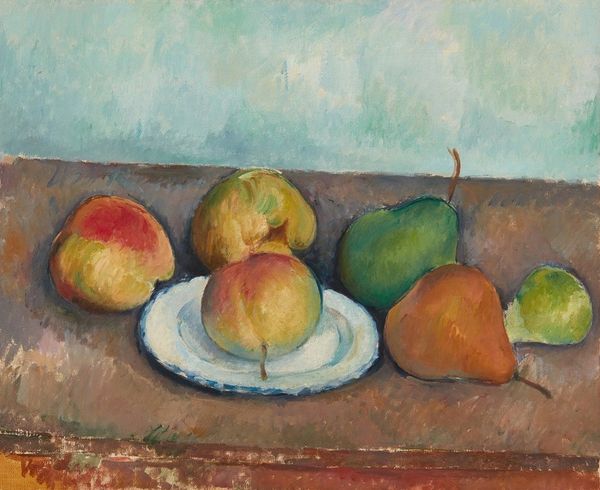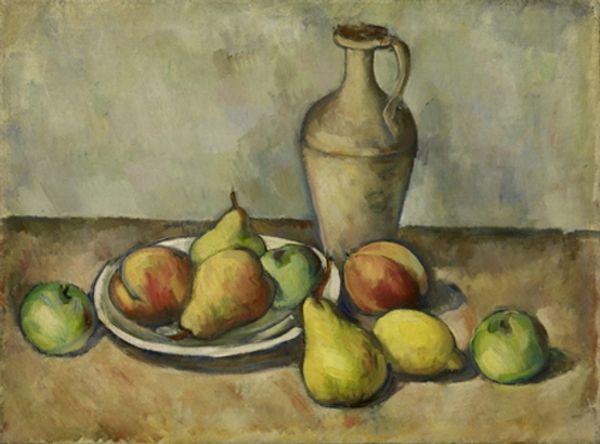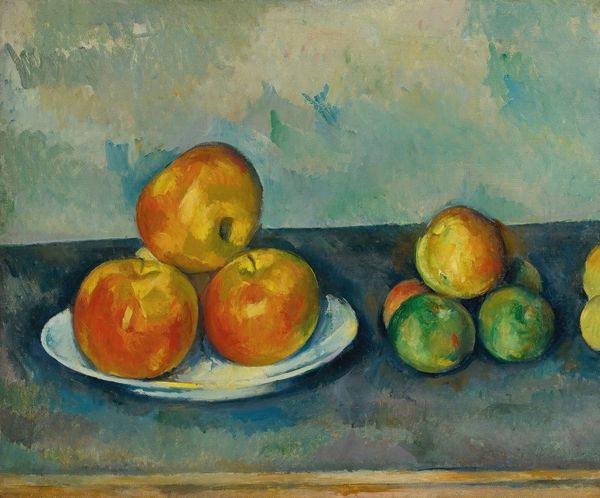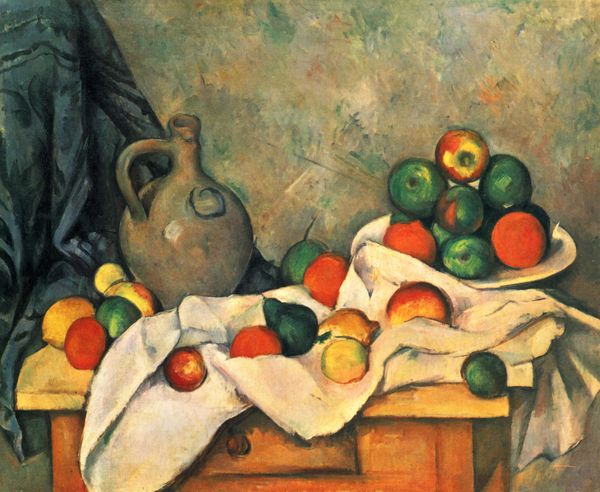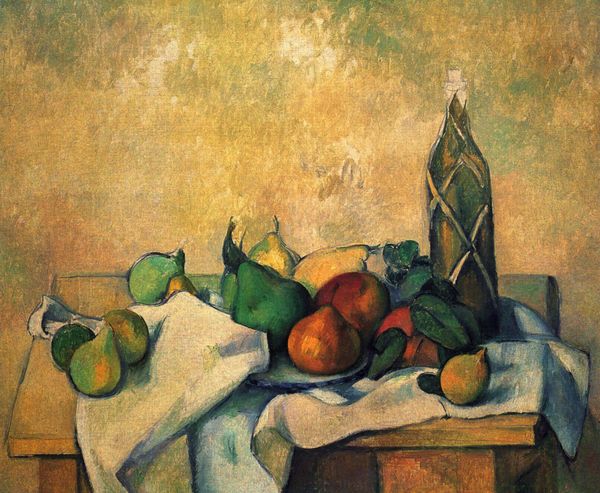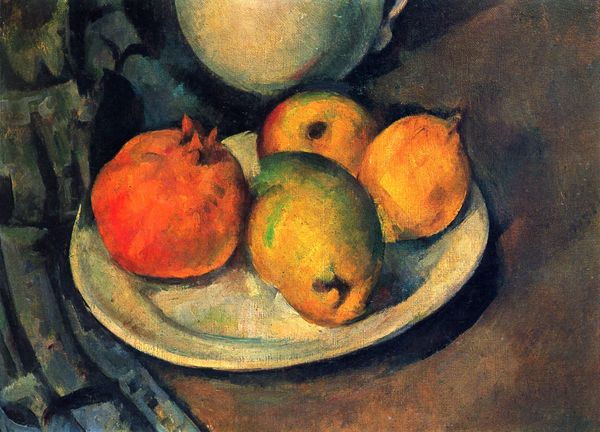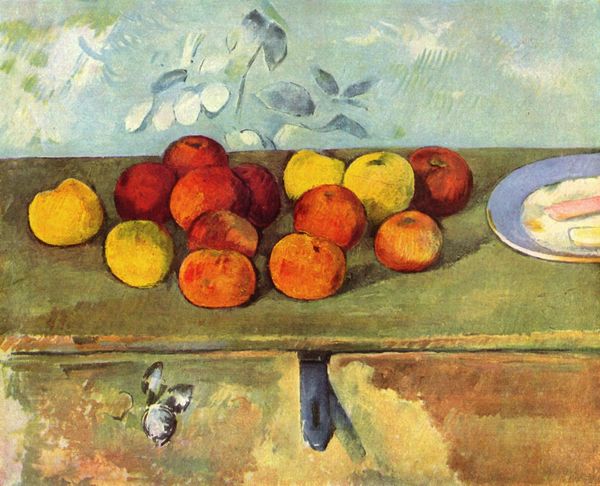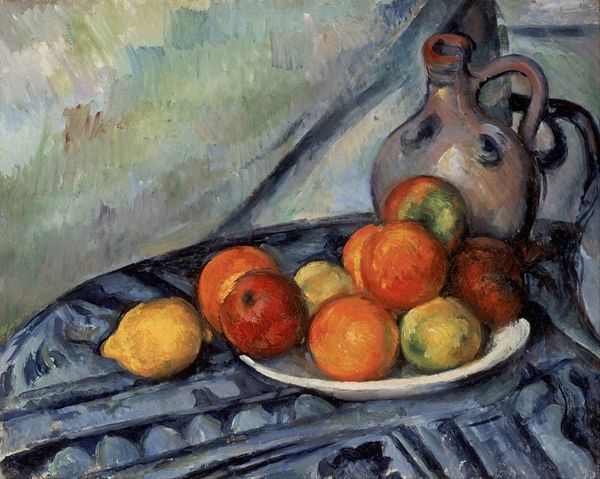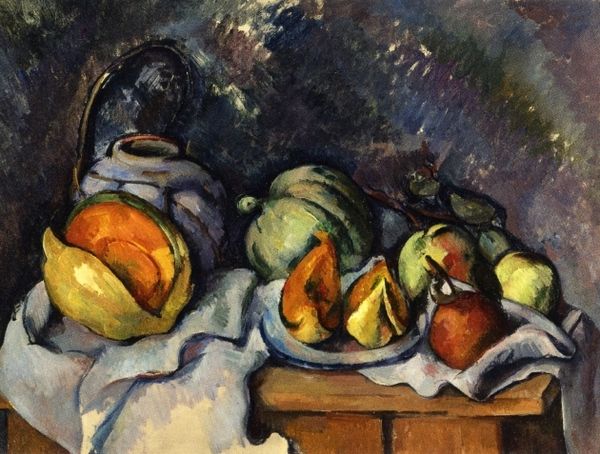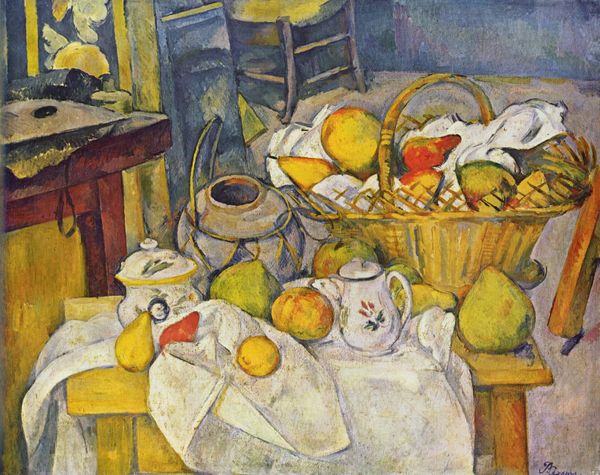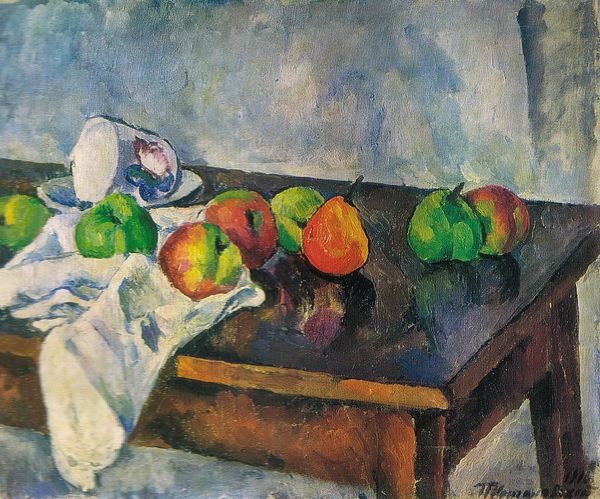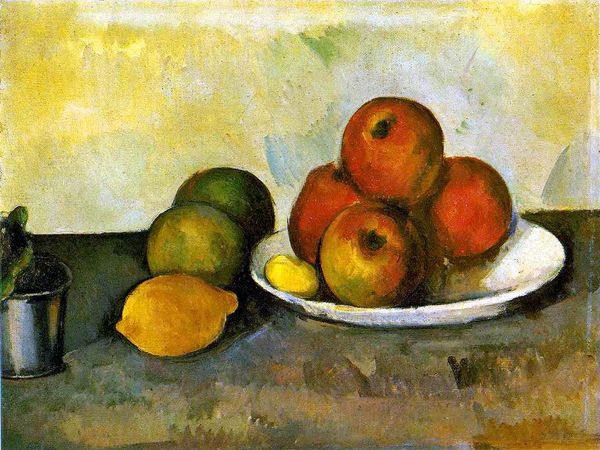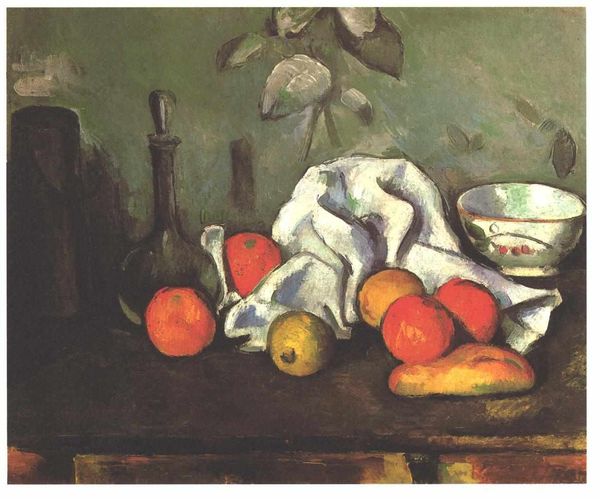
oil-paint, impasto
#
oil-paint
#
oil painting
#
impasto
#
geometric
#
post-impressionism
Dimensions: 43.2 x 62.8 cm
Copyright: Public domain
Curator: Standing before us is Paul Cézanne’s "Still Life, Pitcher and Fruit," created around 1894. It's an oil painting showcasing the artist’s characteristic style. What's your immediate take on this seemingly simple arrangement? Editor: Well, at first glance, it feels rather…grounded. The colors are earthy, the composition solid. Yet, there’s something unsettling in the slight distortions – a tension between representation and abstraction that’s captivating. Curator: Yes, the distortions. Notice how Cézanne flattens the space. The pitcher and the fruit possess a certain volume, but the background almost merges with the foreground, pushing everything forward. What could these geometric arrangements suggest? Editor: To me, the pitcher becomes a silent guardian, a vessel of domestic history, maybe even of social rituals around food and sharing. Cézanne's deliberate distortion isn’t just about visual trickery; it’s about making us reconsider the act of seeing itself, isn't it? Challenging our perception, shaking the very foundations upon which we construct our reality? Curator: Precisely. Consider the arrangement of the fruit. Placed with such deliberation, their imperfection echoes nature's candid essence, avoiding symmetry, yet balanced. Are they emblems of life’s transience, memento mori gently nudging viewers to contemplate the fleeting beauty around them? Editor: It could also challenge academic art norms of that period, subtly critiquing the bourgeois ideal of a perfectly composed and meticulously rendered still life, suggesting perhaps, that truth resides in these nuanced observations, not just idealized forms? Curator: It is fascinating to trace how Cézanne’s Post-Impressionist techniques reshaped art. And he makes such prevalent use of impasto. We feel his presence, his deliberate mark-making in every stroke of the brush. It is really interesting to explore the influence this painting might have had on cubism too. Editor: Definitely. Cézanne's visual legacy continues to echo in the works of countless artists. This artwork speaks to me in the subtle power of simple, yet revolutionary observations. It's as if he decoded the hidden geometric underpinnings of our everyday visual world.
Comments
No comments
Be the first to comment and join the conversation on the ultimate creative platform.
